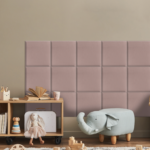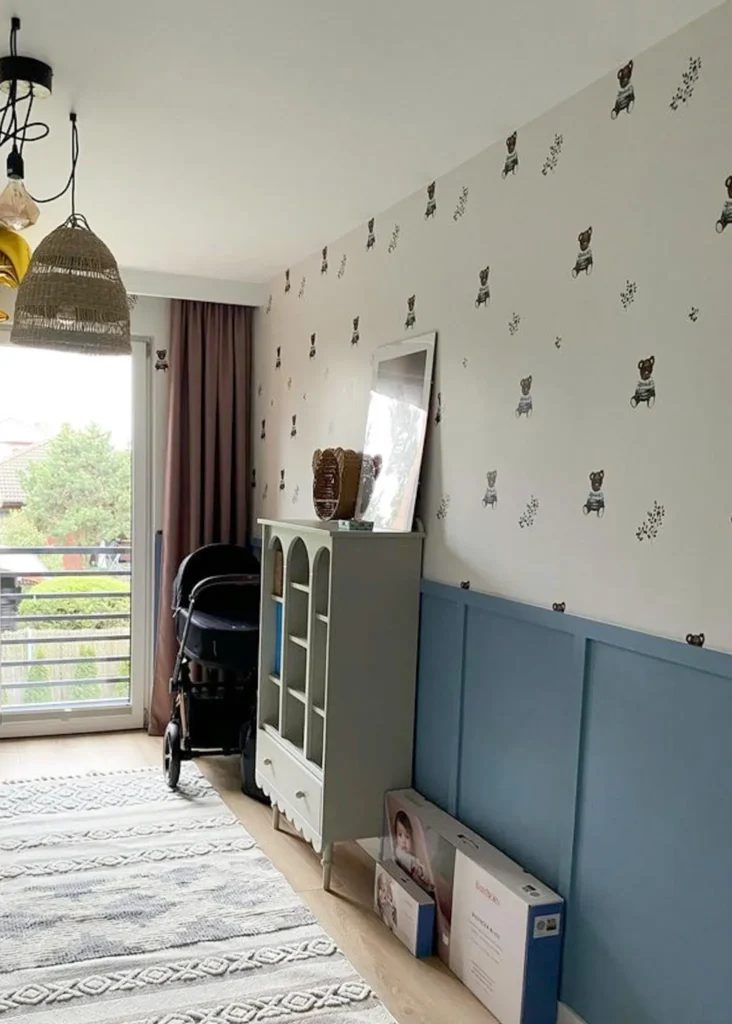A guide for you
When should a child have its own room?
The answer to the question of whether a child should have its own room is one and that is: of course. Much more questionable is when to move a child to a separate room. Choosing the right time to move your child into their own room can have a significant impact on their development and well-being. But how do you recognize that this is the time?
Why should a child have his own room?
Depending on the available space in the house or apartment, a child can have a room just for himself or share it with his siblings. At a certain age, however, it is important for a toddler to have a room separate from the parents' bedroom.
- A child's own room provides a space in which the little man develops its independence and self-reliance.
- The toddler has the opportunity for peaceful, undisturbed sleep and rest.
- During the day, the child enjoys an environment arranged for free play and learning.
- In their room, the child can learn from an early age compliance with certain rules, such as cleaning up toys or locking doors.
- Older children invite classmates into the room. They use the interior design to express your personality.
When to move a child to a separate room?
Each child develops at its own pace and has a different need for closeness with parents. For this reason, there is no single, top-down moment when a child's move to his room should take place. Some parents move as early as 6-month-old toddlers, while others only move preschool-aged children.
Take into account that sleeping with your baby in the same room until the toddler is 12 months old reduces the risk of sudden crib death by 50%[1]. For this reason, it is advisable that for the first year of life the toddler sleeps in the parents' bedroom, for example, in a bed extension. After that time, you can think about moving the baby to his own room.
When to prepare a room for a child?
Although the baby sleeps in the parents' room, there is nothing to prevent it from already having its own room waiting for it. You can gradually get your child used to it, thus building positive associations. Initially, the room can be used for changing, for example, and later also for playing, reading stories and drawing.
You can plan your child's room furnishings for a long time ahead. Once the little one arrives in the world, redecorating and furnishing can be more challenging, so we encourage you to arrange your room before the baby is born. Later, all you need to do is change small details, which gradually the youngest household member also begins to decide.
Up to what age can a child sleep with his parents?
Sleeping with a baby as an infant not only has safety implications, but is also convenient for parents because it facilitates night feedings. For this reason, a good time to move a toddler to his own room can be a good time, when he is already sleeping peacefully through the night. However, this rule does not always work - the child may still need close contact. Therefore, It is not surprising when a one-year-old child sleeps with his parents. Moreover, older children also have the right to do so, although it is worth gradually encouraging them to sleep in their own room.
The child's own room vs. the kindergarten
If it was not possible before, it is worth trying to move the child to his own room when the toddler enters the preschool age. This special time is conducive to the development of the child's independence, although drastic changes should still not be imposed on him. In practice, it happens that a 4-year-old child sleeps with his parents, as he falls asleep on his own, but wakes up during the night and goes to the parents' bedroom.
How should a child's move to their room go?
Remember that children are sensitive to change. Therefore, ensure that they proceed gradually and in a way that the toddler understands.
- Arrange a cozy, safe space - Match the bright, pleasant colors of the room. Choose decorations that will appeal to the toddler, such as wall stickers with animals.
- Talk to your child- Explain to him why he will sleep in his room. Point out the positive aspects of this change, such as that he will have peace and quiet, more space, the opportunity to sleep with his favorite cuddly toys. Assure him that you will always come to him when he calls you.
- Ensure your toddler's sense of security - A turned-on night light will soothe the baby, and an electronic nanny will help parents sleep peacefully as well.
- Make changes gradually - At first, spend time together in the baby's room during the day, then organize naps there for the toddler. Over time, you can try putting your baby to sleep in his own room, for example, every other day. During this time, allow the toddler to come to your bedroom. Perhaps part of the night he will continue to sleep in his parents' bed.
One's own room is a child's kingdom
Over time, every child appreciates his room. After all, this is where everything is for him, he gains privacy and a sense of security. Ultimately, you as the parent have the key influence on whether moving your child into his or her own room will be a difficult separation or a natural, stress-free process. Give your little one time to gradually adapt to the changes.

 Upholstered panel - square
Upholstered panel - square Upholstered panels - rectangle
Upholstered panels - rectangle Upholstered panels - honeycomb
Upholstered panels - honeycomb Upholstered panels - hurdle
Upholstered panels - hurdle